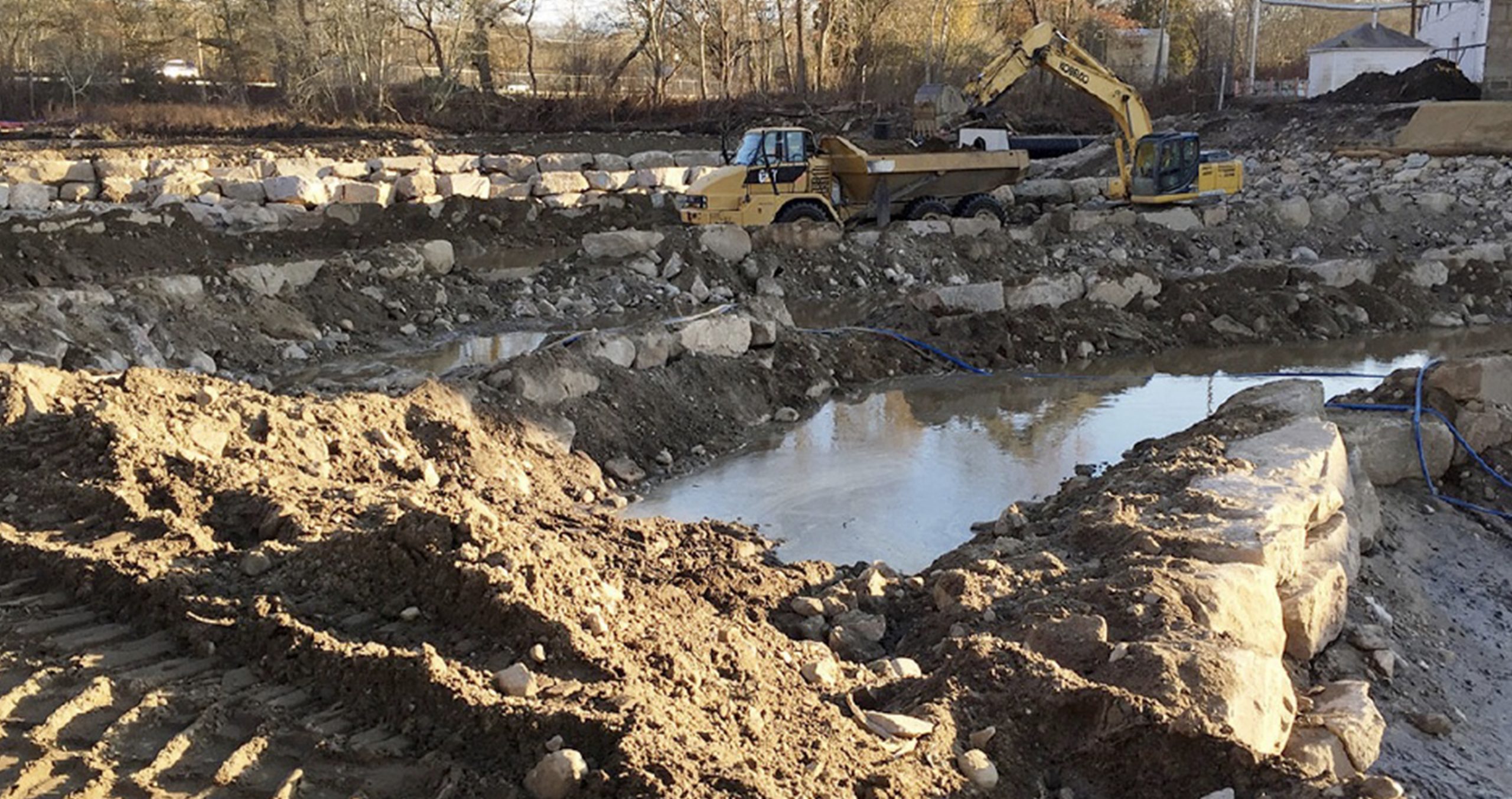


Completed:
January, 2018
Value:
$ 1,800,000

Additional Highlights
SumCo’s work to implement the collaborative approach of WSP and Princeton Hydro resulted in a restoration of the Bladens River that functions with the riverbed’s natural occurring bedrock in the downstream channel area while creating a new channel of riffles and pools in the upstream former pond area. At the same time, the design adopted a sustainable approach, with the beneficial use of impounded silt to improve adjacent manufacturing plant parking and work areas.
Project SYNOPSIS
The Kerite Dam (aka Seymour Dam) was initially constructed in the 1850s across the Bladens River, just upstream from its confluence with the Naugatuck River in Seymour, CT. Its original purpose was to provide hydroelectric power and cooling water for the Kerite Company, a manufacturer of high-voltage electrical cable used under New York Harbor in the late 1800s and the Panama Canal in the early 1900s.
The dam was rebuilt around 1918, but over time wear and tear overwhelmed the stone structure, causing significant water leakage into multiple buildings on the Kerite property. Marmon Utility, the current owner, brought on WSP in partnership with Princeton Hydro to provide construction administration for the removal project. SumCo was contracted to remove the dam, stabilize the river banks, and restore the riparian corridor.
Environmental Benefits
Prior to the dam removal, the upstream water impoundment was at capacity with sediment and silt. Heavy rain events would cause downstream flooding on the roads and properties in the area. The dam removal and pond excavation relieved this flooding as well as water seepage into adjacent buildings. The removal and remediation of sediment improved water quality and aquatic habitat along the upstream riparian corridor. The newly created streambed and step pools enhanced fish habitat and passage to the Housatonic and Naugatuck Rivers, both located downstream from the former dam.
